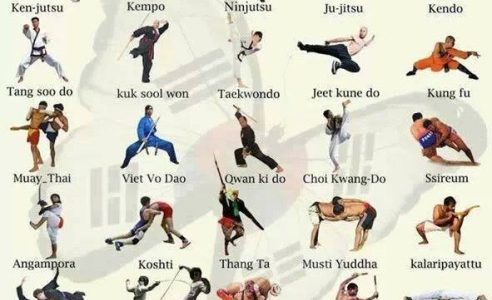The Background And Advancement Of Martial Arts All Over The World
The Background And Advancement Of Martial Arts All Over The World
Blog Article
Write-Up Writer-Kaufman TRUE
Martial arts have a fascinating background that covers centuries and continents. You could discover it appealing just how old practices like Shuai Jiao and Kalaripayattu laid the groundwork for contemporary fight techniques. These disciplines not only highlight physical abilities yet additionally show the cultures that birthed them. As you discover their development, take into consideration exactly how globalization has changed these standard types right into hybrid styles. What martial arts to kill do you believe have shaped today's martial arts landscape?
Ancient Martial arts: The Structures of Combat
As you explore the world of ancient martial arts, you'll find the rich structures that formed fight strategies across societies. Very early methods focused on Self-Defense and survival, typically incorporating strikes, hurting, and weaponry.
In old China, as an example, techniques like Shuai Jiao emphasized throws and joint locks, while India's Kalaripayattu showcased agility and liquid movement. Japanese samurai established Kenjutsu, a polished swordsmanship that highlighted technique and technique.
These martial arts served not just for fight yet additionally as a way of personal development, instilling worths like regard and willpower. The blending of these strategies with time laid the groundwork for the varied martial arts you see today, each mirroring the unique ideologies and requirements of its society.
The Social Impact on Martial Arts Growth
While martial arts often show the practical needs of a society, they additionally symbolize the social values and beliefs of their origins. When you explore various martial arts, you'll observe how they're affected by religious beliefs, approach, and social norms.
As an example, the focus on regard and self-control in Japanese martial arts originates from Zen Buddhism and samurai culture. On the other hand, Brazilian Jiu-Jitsu advertises flexibility and strategy, shaped by the requirement for performance in a diverse, modern environment.
https://www.gamesradar.com/a-new-karate-kid-movie-marks-the-return-of-the-original-franchise/ might discover that the routines, attires, and training methods mirror a neighborhood's background and identification. By recognizing these cultural influences, you deepen your recognition of martial arts and their role fit human experiences around the world.
Modern Adaptations and the Globalization of Martial arts
Martial arts have changed considerably in current years, adapting to modern culture and international influences. You'll observe that standard types have combined with contemporary strategies, producing hybrid styles like MMA. These adaptations accommodate varied audiences, making martial arts obtainable and appealing globally.
With the increase of social networks and electronic platforms, you can find tutorials and competitors from all edges of the world, damaging geographical barriers. This globalization has actually resulted in a shared recognition for various self-controls, from Brazilian Jiu-Jitsu to Taekwondo.
As you engage with these arts, you'll recognize they're not almost combat; they advertise physical fitness, self-control, and mental well-being.
Inevitably, modern-day adjustments have actually enriched the martial arts landscape, making it a dynamic and advancing method.
Final thought
In discovering the history and advancement of martial arts, you reveal a remarkable mix of strategies, cultures, and approaches. From old techniques like Shuai Jiao and Kalaripayattu to the modern-day adaptability seen in MMA, martial arts reflect humankind's pursuit for Self-Defense and personal growth. As you engage with these techniques, you not only gain abilities yet also a deeper recognition for the diverse customs that form our world today. So, continue your trip and welcome the art of battle!
